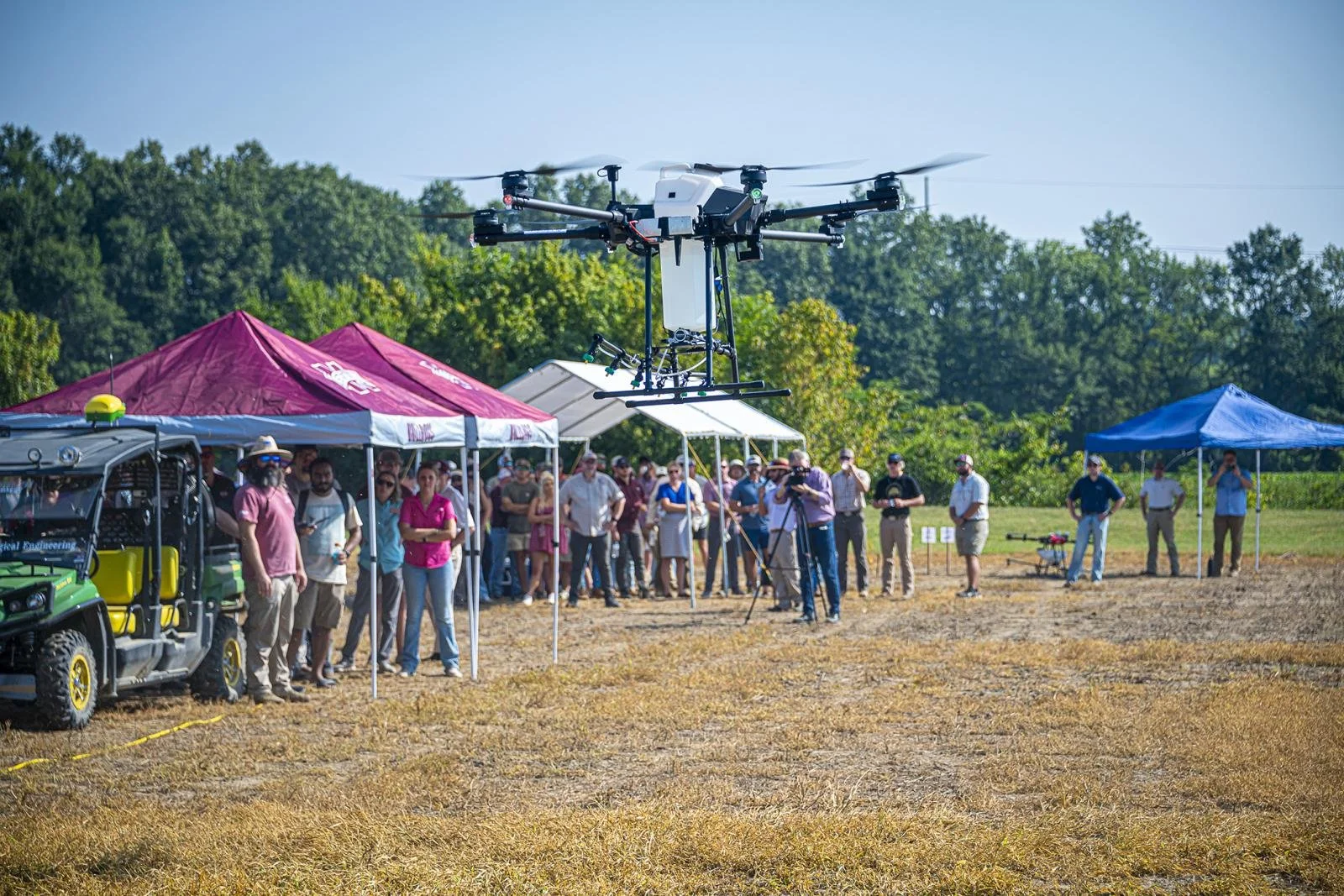How Mississippi State Is Helping Farmers Master Spray Drones
Mississippi’s fields are becoming testbeds for a new era of agricultural automation, and Mississippi State University is helping producers chart that course. Though still in its early stages, the use of unmanned aircraft systems (UAS) for spraying—whether for cover crops, fertilizers, or pesticides—is accelerating rapidly. To support this growing interest, MSU’s Agricultural Autonomy Institute (AAI), with backing from the Mississippi Agricultural and Forestry Experiment Station (MAFES), has launched a comprehensive 13-part video series demystifying the technology and its practical use.
After federal regulations opened the door to commercial UAS operations, farmers began adopting spray drones to save time, reduce labor demands, and improve cost efficiency. But as the technology spreads, so do questions. “We’re getting multiple calls a week—sometimes a day—from people wanting to understand the technology and the regulations, which are still a moving target,” said Madison Dixon, AAI associate director of research. “We realized the best way to help the most people was to create this series, addressing the most frequently asked questions so users can operate safely and successfully.”
Shot in collaboration with MSU’s University Television Center, the series offers short, focused clips on high-demand topics, plus a detailed troubleshooting segment. It’s introduced by AAI director Alex Thomasson and MAFES director Scott Willard—now MSU’s interim vice president for research and economic development. Narration is provided by longtime collaborator Dan Martin, a recently retired USDA Agricultural Research Service engineer and founder of the Remote Pilots and Aerial Applicators Association. With decades of experience in precision ag and drone applications, Martin grounds the series in real-world expertise.
Dixon emphasizes the videos are designed for all spray-drone users nationwide.
“Aerial application by drone is still very new in the U.S.,” he said. “Our mission is to conduct research that supports grower success while advancing innovation and economic growth for Mississippi.”
That mission is tightly woven into the university’s land-grant DNA. “This effort grew out of a task force initiated by the Mississippi Commissioner of Agriculture,” said Darrin Dodds, MAFES associate director. “Our strong partnerships with the Department of Agriculture and Commerce and the Bureau of Plant Industry make it possible to respond quickly to the needs of Mississippi’s agricultural community.”
MSU researchers demonstrate unmanned aircraft systems with spray capabilities during a recent agronomy field day. (Photo by David Ammon)
Dodds credited USDA’s National Institute of Food and Agriculture for funding graduate research foundational to AAI’s work. Students conducted pivotal studies on off-target movement, herbicide performance, and insecticide efficacy—data that continue to shape best practices for drone-based application.
AAI’s momentum is bolstered by productive collaborations across MSU, bringing together experts from agricultural engineering, plant and soil sciences, agricultural economics, and beyond. Additional support from the Mississippi Corn Promotion Board and Mississippi Soybean Promotion Board ensures that the research aligns with grower priorities and industry demand.
Mississippi State’s work underscores a simple truth: the future of farming isn’t just arriving—it’s taking flight. Through research, outreach, and hands-on training, the university is helping growers harness aerial autonomy safely, efficiently, and with confidence.
To watch the video series, visit www.aai.msstate.edu.
To learn more about MAFES, visit www.mafes.msstate.edu.
